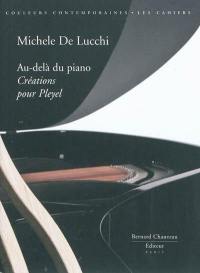
Fiche technique
Format : Relié sous jaquette
Nb de pages : 157 pages
Poids : 1250 g
Dimensions : 29cm X 25cm
EAN : 9782732434940
La salle Pleyel
lieu de modernité
Quatrième de couverture
La salle pleyel
Lieu de modernité
Lieu de rayonnement international, la salle Pleyel a accueilli, depuis sa construction en 1927 par la manufacture des pianos Pleyel, les plus grands musiciens et chefs d'orchestre du monde. Après quatre ans de rénovation, la salle Pleyel retrouve un équilibre formidable entre sa conception acoustique révolutionnaire et sa recherche esthétique d'une rare richesse et d'une grande pureté, témoin de l'époque Art déco.
Sous l'impulsion d'Hubert Martigny, ce voyage entre passé et présent, entre héritage et modernité, a passionné l'architecte français François Ceria, l'acousticien américain Russell Johnson et l'artiste italien Marco Del Re.
Ce livre, conçu comme un cahier d'architecte, fait le parallèle entre la conception originelle de la salle et sa nouvelle architecture sur le plan de l'acoustique, des travaux et des arts décoratifs qui rythment son espace.
At the heart of modernity
An internationally renowned concert hall ever since it was built in 1927 by the Pleyel piano company, the Salle Pleyel has witnessed performances by the world's leading musicians and conductors. After a four-year-long renovation programme, the Pleyel has regained the perfect equilibrium between its revolutionary acoustic design and an uncompromising, purist aesthetic approach redolent of the Art Deco era.
Spurred on by Hubert Martigny, the ceaseless shuttle between past and present, heritage and modernity, was a source of fascination to French architect François Ceria, American acoustic engineer Russell Johnson and Italian artist Marco Del Re.
This book, conceived as an architectural manual, traces the links between the original concepts behind the Pleyel and its new architectural incarnation through examination of the acoustic, the building works and the decorative features that rhythm its spaces.










